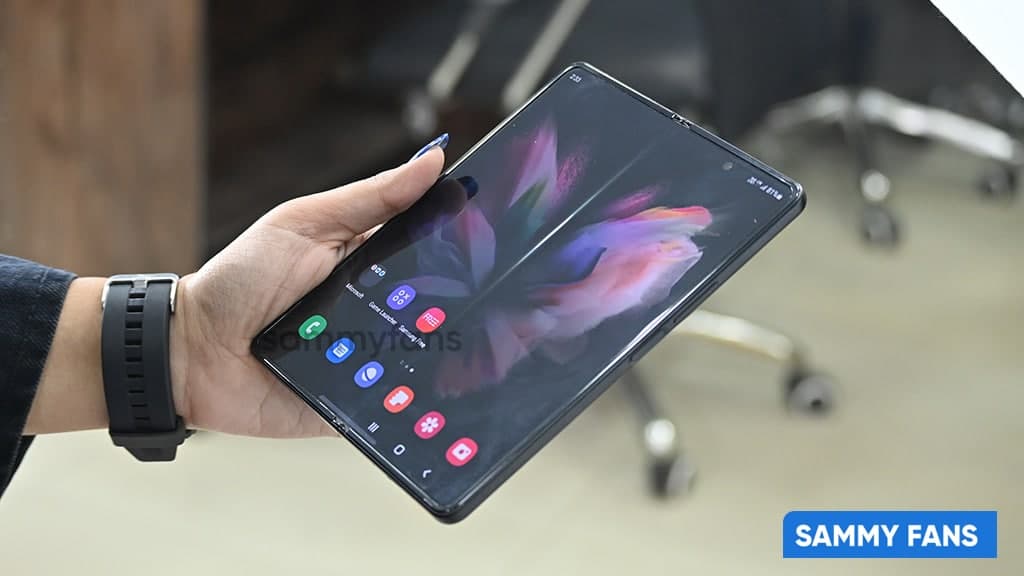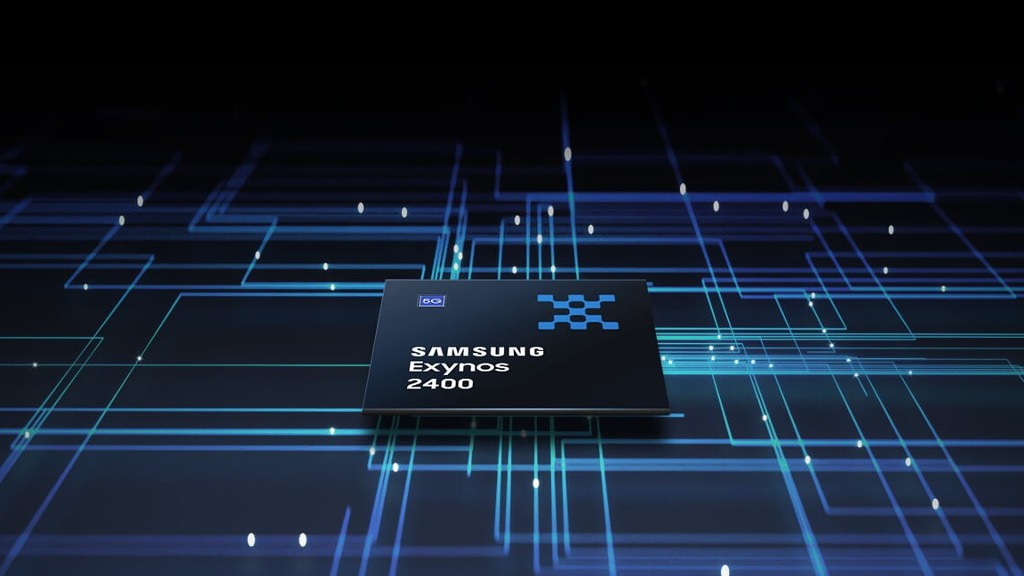News
Check out every new One UI 5.0 Connected devices feature on Samsung Galaxy Z Fold 3

Samsung Galaxy Z Fold 3 carries lots of features to let you connect different devices with ease. But when it’s connected to many devices at a time, it’s quite difficult to manage them. Meanwhile, Samsung One UI 5.0 makes it easy to manage all your devices with a new Connected devices menu in the Settings of your Galaxy Z Fold 3.
Connected devices is a completely new feature of One UI 5.0 software. It lets you manage all the related settings at one place you won’t have to go here and there to find them.
Join SammyFans on Telegram

Samsung Galaxy Z Fold 3 Connected devices: One UI 5.0
Quick Share:
The Quick share feature allows you to share pictures, videos, PDFs, and other documents with others in original quality. Once you tap on this option, you will be able to manage its settings as well as you can see the sharing history and more.

Auto switch Buds:
When turned on, it automatically switches your Galaxy buds from another device to your current device when you make calls, answer a call, or play media. Inside, you can select which buds to switch to your phone.
Call & text on other devices:
It is a very useful feature, When you enable it, you will be able to call and text from your Galaxy watch, tablet, or speaker using your phone’s number and mobile plan. However, make sure that both devices are signed in with the same Samsung account and have this feature turned on.
Continue Apps on other devices:
While watching any show on your phone or performing other tasks, you might think of switching to your tablet for a clearer view, this feature will help you do so. Using this, you can pick up where you left off with other devices signed in to your Samsung account.
You can also copy text, images, and more on your phone and paste them onto another device. Currently, it supports two applications including Samsung Internet and Samsung Notes.

Link to Window:
This feature will help you connect your phone to your PC or laptop. Once connected, you can see your notifications, send and receive text messages, make calls, and view recent photos right from your desktop.
Samsung Dex:
With this, you can connect your Galaxy smartphone to a PC, Laptop, or TV to bring it to life on the big screen. You can do so using an HDMI or USB cable, or wirelessly.

Smart View:
Smart View lets you share media from your smartphone straight to your TV, including photos, movies, and even music. Samsung Smart View can also be used on any of your connected devices in your home, from your mobile to your PC and tablets.

Smart Things:
It is a powerful remote control for all your home appliances. It lets you control and monitors your home environment through a mobile device to meet your specific needs.
Android Auto:
This feature is for people who travel by car. It brings apps to your car display so you can focus while you drive. You can control features like navigation, maps, calls, text messages, and music.

Other than these advanced connectivity features, Samsung also offers “Bluetooth” and “Mobile Hotspot and Tethering” features so you don’t have to go to another section to manage them.
News
Samsung boosts HBM capabilities with new investments

Samsung has reportedly signed a contract valued at around $15 million to sell and purchase semiconductor equipment to expand HBM chip production facilities at its Suzhou plant in China.
BusinessKorea reports that Samsung is expanding its investments across HBM facilities. The company aims to strengthen its advanced semiconductor packaging to lead the supply chain.
Eying the HBM4 chip boom, the Korean tech giant is focusing on enhancing its packaging capabilities to secure future technological competitiveness and narrow the gap with SK Hynix.
KEDGlobal revealed that Tesla asked Samsung and SK Hynix to supply HBM4 samples. The US EV maker could choose either Samsung or SK Hynix as its HBM4 supplier after testing samples.
Pay attention, packaging includes the tech and processes for shaping semiconductor chips to fit the devices they will be mounted on – making it an important aspect of development and production.
Notably, the Suzhou China facility is currently Samsung’s test and packaging production base outside Korea. Increased investment is seen as a choice for innovation in packaging processes and production efficiency.
Apart from this, the company is also ramping up its packaging production bases in Korea. Samsung has recently signed an investment agreement with South Chungcheong Province and Cheonan City.
News
Samsung could get a major role in Tesla’s AI revolution

Tesla reportedly asked Samsung and SK Hynix to supply HBM4 chip samples. Both semiconductor firms are developing sixth-generation high-bandwidth memory chip prototypes for Tesla.
KEDGlobal reports that Tesla asked Samsung and SK Hynix to supply HBM4 chips for general use. It is expected to choose one of the two companies as its HBM4 supplier after testing their samples.
Using custom HBM4 chips made by Samsung and SK Hynix, Tesla seeks to enhance its artificial intelligence (AI) capabilities apart from reducing AI chip reliance on Nvidia.
Samsung is working hard to win Tesla orders for HMB4 chips. The company even working with Taiwan’s TSMC to foster its HBM chip’s development and maintain an edge over SK Hynix.
SK Hynix is also accelerating its development to maintain its leadership in the HBM space. The firm winning Tesla’s HMB orders would see a sharp push in the global memory supply chain.
Notably, the 6th-gen HBM4 chips are crucial for Tesla’s Dojo supercomputer, which is designed for training AI models and will also support its AI data centers and autonomous cars.
The HBM4 semiconductor offers notable enhancements over the previous generations, delivering up to 1.65 Tbps of bandwidth, 1.4 times faster than the HBM3E while consuming 30% less power.
News
Report: Samsung eyes 2nm Exynos 2600 to attract Qualcomm, Nvidia

Samsung Foundry wants to produce Exynos to attract 2nm clients like Qualcomm and Nvidia. Major chip designers have no option other than TSMC for contract semiconductor production.
Digitimes report suggests that Samsung Foundry wants to produce 2nm Exynos 2600 chipset. The company has recently started Exynos 2500’s mass production for Z Flip 7, Korean media reported.
TSMC is producing 3nm Snapdragon 8 Elite chips for Qualcomm. Nvidia also produces its most advanced semiconductors using TSMC’s cutting-edge process nodes.
The latest report indicates that Samsung Foundry is advancing its semiconductor capabilities. The mass production of Exynos 2600 is under consideration for next year.
Samsung Foundry has no other option but to prove its semiconductor capabilities. If the Foundry division manages to secure decent yield rates in the 2nm process, Qualcomm may ink a deal.
Exynos 2600 is a great opportunity to demonstrate the technological innovations of the Foundry division. It would attract key clients like Qualcomm, marking a strategic push for the business.
Samsung will have 2x benefit with the 2nm process technology. The Exynos 2600 would power the Galaxy S26 series – ending the reliance on Qualcomm for Snapdragon chipsets.
Qualcomm will also get the opportunity to negotiate production costs with TSMC. Samsung Foundry is comparatively cheaper than TSMC as there will be two major options for clients.
“Samsung Electronics’ foundry division is advancing its semiconductor capabilities through the mass production of the Exynos 2600 (tentative name), marking a strategic push for self-sufficiency in mobile application processors (APs).” – Digitimes.














